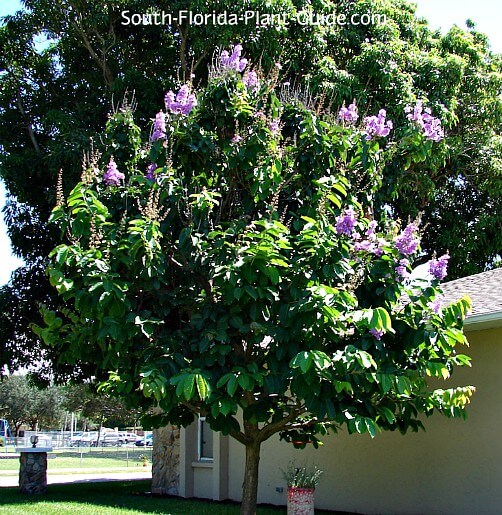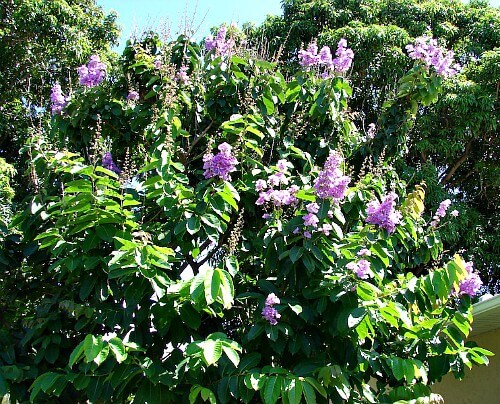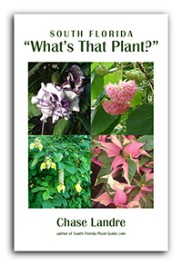Queen Crape Myrtle Tree
Lagerstroemia speciosa
Queen crape myrtle tree is the big mama of crapes, with giant pale purple blossoms, and a shade tree form.

One of the best features of this tree, though, isn't just the big, fluffy flowers or the shapely form but the fact that it doesn't lose its leaves in winter like other crape myrtle varieties.
The queen is considered semi-deciduous, meaning it will drop most leaves just before new growth appears in spring, so the tree is never completely bare...or only for a very short time, if at all. And before they drop, many leaves turn bright red toward end of winter.
Queen crape myrtle makes a beautiful shade tree, growing quickly to give you a nice medium-sized tree to sit under with strong branches to hang small potted plants.
There is a pink-flowering variety though the purple one is what you'll find available from most nurseries.
Crape myrtles are said to be deer-resistant plants (we make no guarantees, though.)
Plant specs
This purple crape myrtle is a fast grower to about 30 feet or more - but you can keep it shorter if you want...hire a professional arborist to make sure the tree doesn't get over-pruned and weakened.
They need a full sun area to get the most lilac-colored blooms, with lots of room for the branches to spread out.
Most crapes are cold tolerant, fine anywhere in Florida, but the queen is a bit more tender. It prefers Zone 10 temps.
The bloom season is much longer than other varieties, beginning in spring and lasting into fall. Some sources say summer bloom only but I've seen them flower into November if the weather is mild.

After flowering, you'll see large seed pods which you can cut off or leave on to fall off on their own.
Plant care
You may want to prune off low-growing branches on a young tree to make more headroom for walking or sitting under later as it matures.
Add top soil to the hole when planting.
These trees love to be fed. Apply a good granular fertilizer in spring, summer and fall.
Water on a regular basis but make sure the planting area drains well.
Plant spacing
Queens have an unusually large branch spread for a crape myrtle. Plant 15 feet or more away from the house.
That being said, if you plan on having a hard pruning done every year, you can come a bit closer to the house, at about 8 feet.
You can plant fairly near drives and walkways, about 6 feet minimum, because the crown of the tree will soon be above head height. Keep in mind, though, that fallen blossoms on the driveway may make a bit of a mess, and leaf litter toward end of winter might be better on the lawn.
If you want to line your property with these trees, place them about 10 feet apart.
Landscape uses for the queen crape myrtle tree
- shade tree for the yard
- along (or near) the property line
A.K.A. Queen's Crape Myrtle
GOOD SNOWBIRD PLANT? NO
COMPANION PLANT SUGGESTIONS: This tree does best getting established without stuff planted around its base...including turf grass. Nearby plants might include variegated pittisporum, downy jasmine, plumbago and drift rose.
Other large flowering trees you might like: Jacaranda, Hong Kong Orchid Tree
Take a break!
The ultimate guide to low-maintenance plants
and landscaping!
An ebook by
Chase Landre
author of
South-Florida-Plant-Guide.com
Learn more!
Get a greener thumb!
Want to learn more about South Florida planting, watering, fertilizing and dealing with weeds and pests?
See our Gardening How-To section for answers!
Get instant curb appeal!
An ebook by
Chase Landre
author of
South-Florida-Plant-Guide.com
Learn how to get instant curb appeal with fast growing plants and landscaping techniques!


